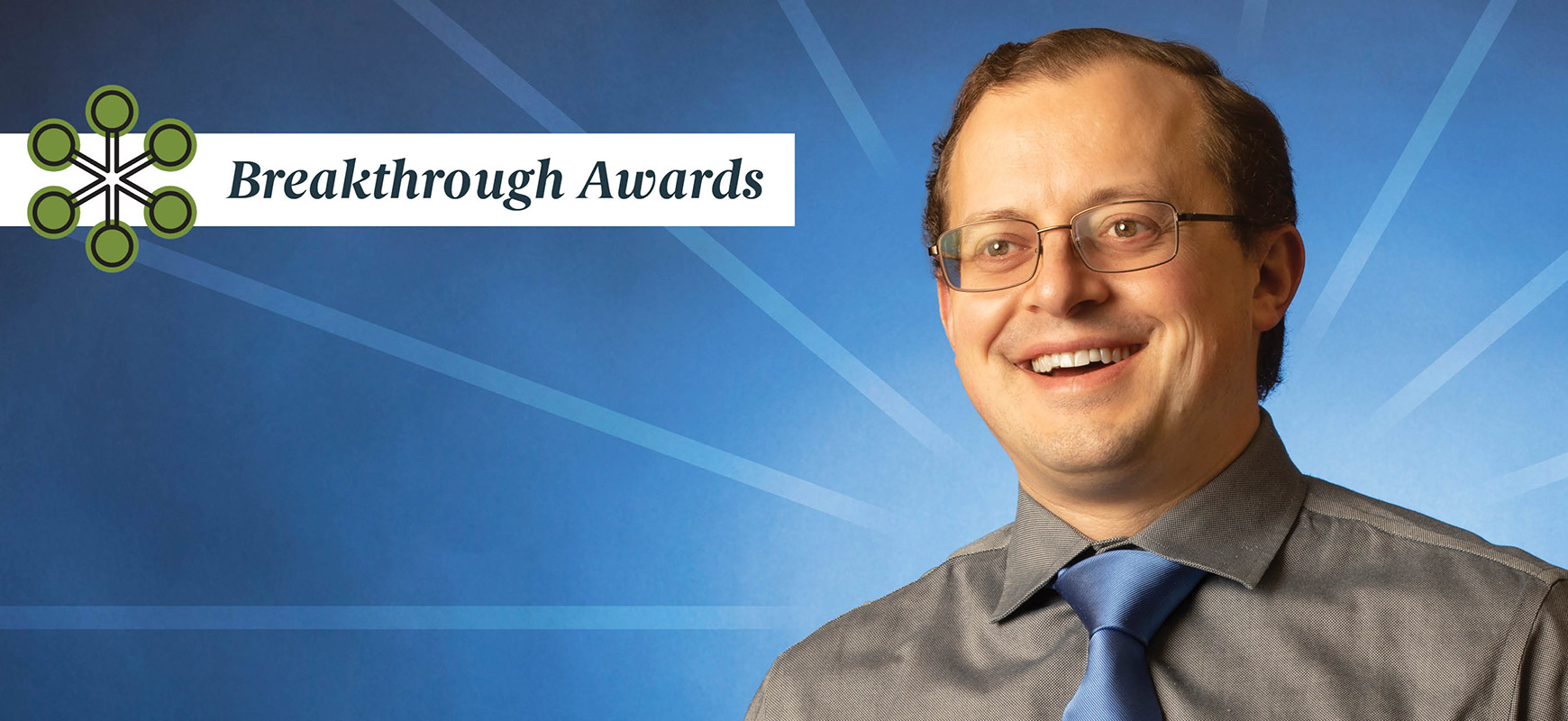
Billion points of light
From solar panels to TV displays, quantum dots shine bright
Posted on: June 7, 2019; Updated on: June 7, 2019
By Page Ivey, pivey@mailbox.sc.edu, 803-777-3085
Andrew Greytak works with very small objects that emit brilliant light. These objects — nanocrystal quantum dots — can be altered for different uses ranging from color-saturated television and screen displays to improved cancer detection and solar cells.
One issue facing Greytak, a chemistry professor and researcher in the University of South Carolina’s College of Arts and Sciences, and others in his lab is the inconsistent nature of these materials whose properties can vary based on something as simple as their size. His work to purify quantum dots has made Greytak a leader in the field.
“A central goal in the early stage of my group’s work has been to try to identify metrics that can predict photophysical and chemical behavior, and develop purification procedures that can produce nanocrystal samples with consistent metrics,” Greytak says.
The cleanest form of energy is conservation. If we can improve the efficiency of the products that are using energy, we can reduce the amount of energy we need.
Andrew Greytak, chemistry
“Andrew and his students published the first description of gel permeation chromatography as a method to purify quantum dots,” says Donna Chen, a fellow professor in the chemistry and biochemistry department. “USC has filed a U.S. patent application on this technique, and the method has already been adopted in research by groups at UC Berkeley and at Clemson and cited in their publications.”
In his nearly 10 years at the university, Greytak has worked to improve the efficiency of these tiny particles. The draw, he says, is the creation factor.
“I like to work on tangible things, to make new things with different characteristics,” he says. “Specifically, with quantum dots, I really like the visual character of the colors.”
The particles absorb light, then emit it in vibrant colors that have made quantum dots the latest thing in screen displays. But, for Greytak, the more exciting applications are in medicine, where the particles can be altered so they will react or emit light when certain cells, such as cancer cells, are present. The quantum dots can also improve the efficiency of lighting and solar power.
“The cleanest form of energy is conservation,” Greytak says. “If we can improve the efficiency of the products that are using energy, we can reduce the amount of energy we need.”
Greytak brings the sustainability part of his research straight into classrooms, says Michael Myrick, a professor in the chemistry and biochemistry department.
“In particular, Andrew and his group conceived the campuswide Sustainability Research and Practice Showcase to connect student-led groups interested in sustainable practices and businesses to science and engineering research groups on campus,” Myrick says. “This has been coupled with an effort to improve learning outcomes in Chem 112 (general chemistry) and Chem 541 (physical chemistry) through incorporation of sustainability concepts.”
Greytak says sustainability is one of the important ways his work can be used in the real world. “These applications are where we can really make a difference for people,” he says. “We can address the energy challenge and make affordable and high-performing solar cells.”
Share this Story! Let friends in your social network know what you are reading about